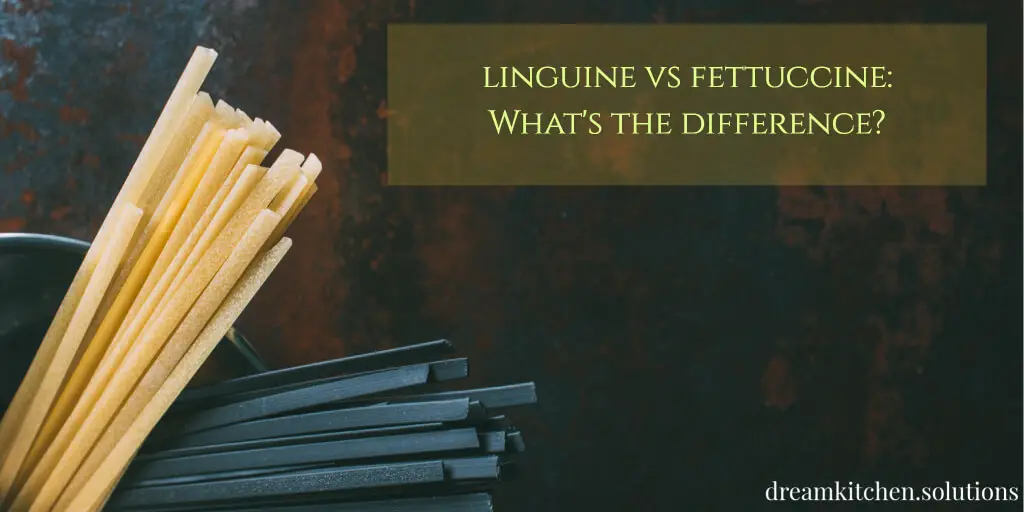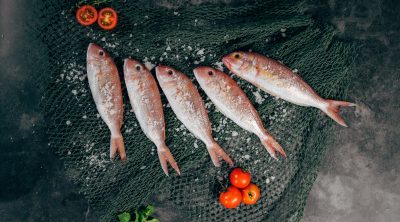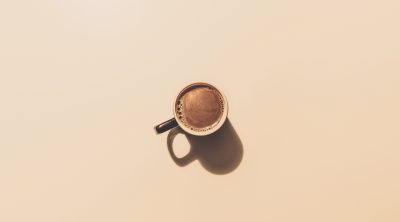As you know, pasta comes in many different varieties. Some shapes and types look radically different, and some can easily be mistaken for each other. Shape, size, flour type, and ingredients can all play a part in what a pasta looks and tastes like.
Linguine and fettuccine are both a long, thin, noodle-like pasta variety. In fact, at first glance, they may even appear to be the same type of pasta. You can find them both fresh and dry, and probably served to eat with a delicious sauce.
So, where are the differences? Are there any? Rest assured, there are. While they may start out the same, they turn into two entirely different kinds of pasta, used for separate entrees.
The History of Pasta
Though we may think of pasta as being Italian, the early roots of the food date back much further, to Arabia. The first mentions of pasta in Italy are from Sicily, around the year 1150.
Since then, the Italians have cultivated a cuisine culture that uses pasta as its centerpiece. In the United States, we may feel all types of pasta taste the same and are interchangeable, regardless of the meal we’re preparing.
To the sophisticated pasta connoisseur, however, nothing could be further from the truth. Each pasta has a purpose, with strengths that find it most suitable for certain types of meals and preparations.
It s true that today we consider pasta a strictly Italian cuisine. Even if it didn’t originate in Italy, it certainly has a long history there. There is also no denying that Italy has finessed the art of cooking with pasta and creating delicious dishes that we can’t get enough of.
Linguine and fettuccine may both be well known and recognizable pasta types. Despite this, they have very different origins and serve different purposes when prepared. Let’s take a deep dive.

Linguine
Linguine is from Genoa, the capital of the Liguria region of Italy. The word linguine means “little tongues.” Linguine is made of flour—white or wheat—and water, and first made its appearance in the 1700s.
A thin, elliptical pasta, linguine is wider than spaghetti, and a little flatter. It is not as flat as fettuccine and is more narrow. Its thinness leaves this pasta fragile.
Linguine can also be found in an even thinner version, called linguette.
The delicate nature of the linguine pasta dictates the kind of sauce it should be prepared with. No heavy sauces, chunky meats, or large vegetables are served on a bed of linguine.
You’ll find light, thin, sauces and sauteed greens are a better accompaniment for linguine. These light sauces are easily able to fully coat each strand of linguine.
Traditionally, linguine is expected to do anything spaghetti can do. Linguine’s width, however, does allow it to carry some heartier sauces that are usually not served with spaghetti.
Pesto, oil-based dressings, and light tomato-based sauces go well with linguine. It also pairs well with seafood.
If you’re looking to add an authentic Italian touch to your linguine meals, skip the parmesan when eating seafood-based linguine. You can also plan on leaving out tomatoes when serving clams with your linguine.
While common in the United States, both are virtually unheard of in Italy.

Fettuccine
Popular in the Roman and Tuscan regions of Italy, fettuccine is traditionally made fresh at home. The word fettuccine means “small ribbons” in Italian, and that’s just what the pasta looks like.
Fettuccine is similar to another pasta, tagliatelle, but is more narrow.
Fettuccine is generally considered one of the earliest pasta varieties made and is still easy to create at home. This is especially true if you have a pasta maker.
The flour and egg are worked together, rolled out, and finally sliced into noodles.
In the United States, fettuccine is frequently associated with an alfredo sauce, a heavy, white, cream-based topping. While it may be the go-to pick in the United States, this sauce wasn’t created until early 1914, by Alfredo de Lelio, in Rome.
Fettuccine alfredo was based on the Roman meal fettuccine al burro. Though the restaurant where it was first created still exists, fettuccine alfredo doesn’t have the popularity in Italy it enjoys in the United States.
While fettuccine may be confused for linguine, it’s a wider, heartier, pasta. Made with egg—approximately one egg per 3.5 ounces of flour—fettuccine is flatter, thicker, and wider than linguine.
It’s a substantial pasta that can support a heavy, creamy sauce. Meat sauces, larger pieces of meat, and healthy chunks of vegetables can all be served with fettuccine.
You are more likely to see that happen outside of Italy. Bolognese and carbonara sauces are both fettuccine classics.
Linguine and Fettuccine – When to Use What
The most helpful way to decide which pasta to use is to think about a meal having balance. Thinner, lighter, types of pasta more easily support thinner, lighter, sauces. A thick, more substantial, pasta lends itself well to a heavier sauce.
The dough used in different types may be similar—some with egg, some without—but the application of the finished pasta piece is where it’s really allowed to shine.
Lighter pasta types with light toppings have a warm-weather feel attached to them. Clams on a bed of linguine, or linguine in a fresh pesto sauce, speak of fresh catches and produce.
Heavy, hearty sauces, on the other hand, bring with them the comfort of cool-weather foods. A backdrop for a substantial meal that will “stick to your bones,” so to speak, and keep you warm, whatever the temperature.
While many around the world are fine with bending the rules when it comes to pasta, that’s not always true in Italy. Generally speaking, both linguine and fettuccine are expected to be served with a truly traditional sauce.
Smaller, shaped varieties are considered better for serving with larger cuts of vegetables. Their nooks and crannies tend to hold onto foods more readily while not lending themselves to absorbing sauces the same way threadier pastas do.
There’s more to consider if you’re trying to replicate true Italian cuisine. Chicken and meatballs are not frequently served with pasta outside of the United States.
In Italy, pasta is considered a course on its own—not simply a side that accompanies meat. Most kinds are rarely served with meat. If you want something authentic and also want to include meat, a bolognese-style ragu will be your best bet.
Pasta has been, and will continue to be, a staple in diets and menus across the world. Embrace the different kinds of meals you can make with different types of pasta. There’s little doubt you’ll enjoy them all.






